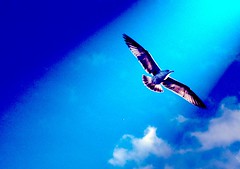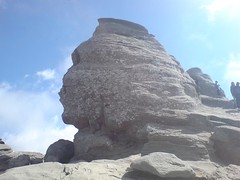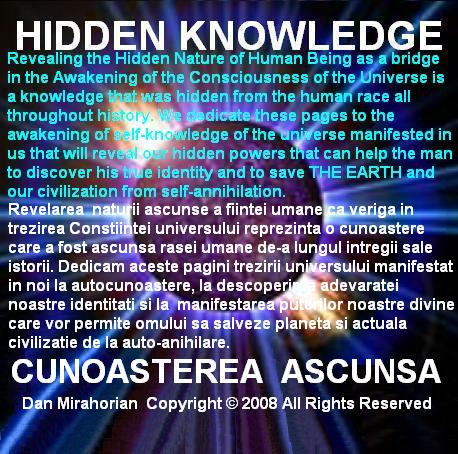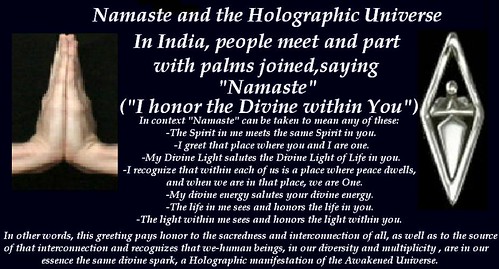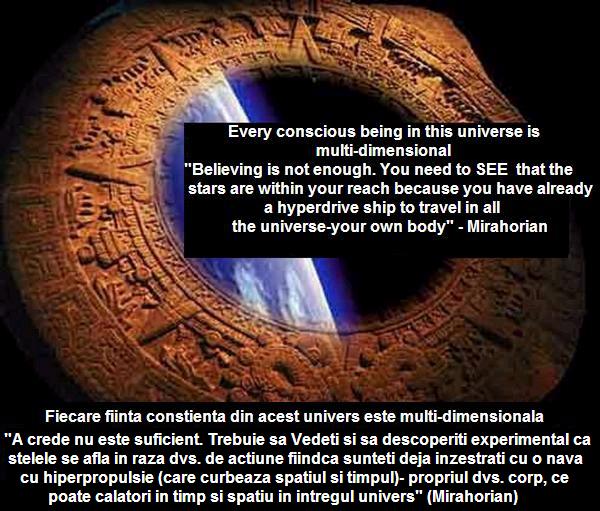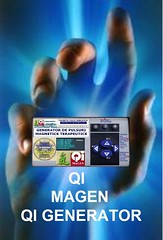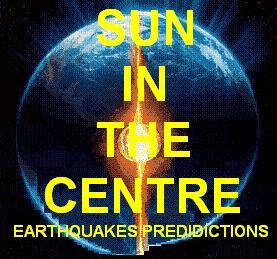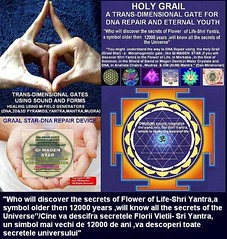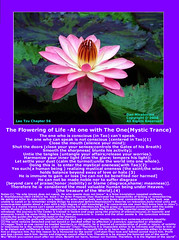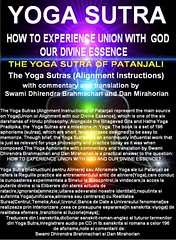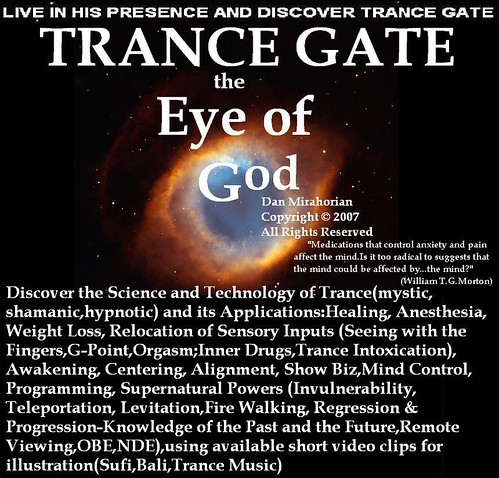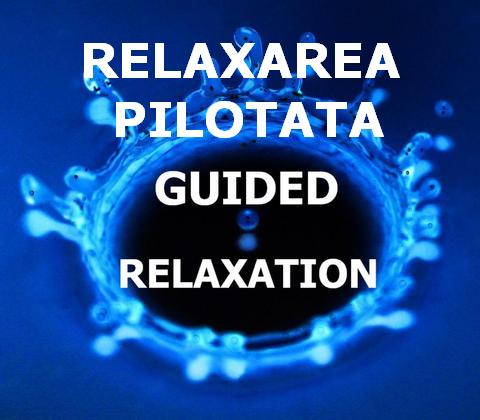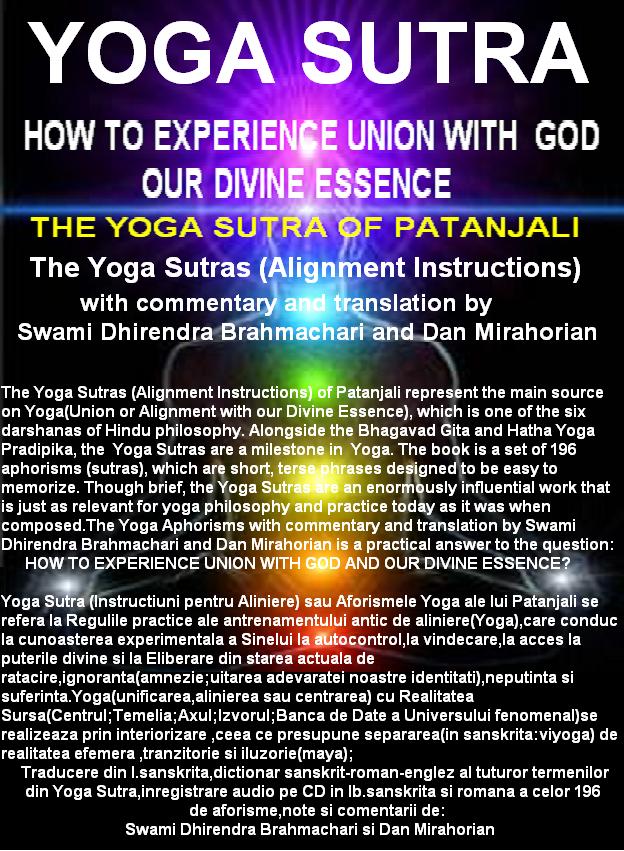The Way of Awakening in Socratic Maieutics (Plato's Cave), Jnana Yoga, Zen Koan and in Raja Yoga[Patanjali's Aphorisms(Yoga Sutra)]
Calea trezirii in Mosirea(maieutica) lui Socrate(Pestera lui Platon), in Calea cunoasterii (Jnana Yoga) , in metoda trezirii din buddhismul Zen utilizand Koan( intrebari paradoxale) si in Raja Yoga[Aforismele lui Patanjali(Yoga Sutra)]
Imagine that the whole mankind is looking at a projection of reality(a world of shadows) on the inner wall of the mind (mind screen) created using electrical impulses in the same way in which we obtain an image on a TV screen
The answer kills the void created by the question- Socratic Maieutics, Jnana Yoga, Zen Koan and Raja Yoga (Patanjali's Aphorisms)
La réponse tuerait le vide crée par la question- La maïeutique socratique, le Jnana Yoga, le Koan Zen et Raja Yoga de Patanjali
Raspunsul ucide golul creat de intrebare- Conexiunea dintre maieutica Socratica, Jnana Yoga, metoda Koan-urilor din buddhismul Zen si Raja Yoga
Indirect versus Direct Knowledge
De la cunoastere mijlocita la cunoastere directa
Savoir Intellectuel ou Connaissance directe de l' Ultime
Cunoastere intelectuala sau cunoastere directa a adevaratei noastre identitati
Socrates: "Chez-moi, il n'y a point d'enfantement de savoir" La maïeutique n'est pas un problème à résoudre mais une réalité dont il faut faire l'expérience;
Alegoria "Pesterii lui Platon" este o cheie care ne poate ajuta la descifrarea situatiei in care se afla omenirea pe Terra si asupra modalitalilor de eliberare sau de trezire; aceasta situatie a fost reactualizata in filme precum: Truman Show si Matrix
Cand privim ecranul unui televizor nu vedem realitatea ci o proiectie a realitatii realizata cu ajutorul impulsurilor..pe un pereteinterior(ecranul mental)
Atunci cand sustinem ca am perceput ceva chiar noi, ne-am obisnuit sa subliniem acest lucru spunand ca am vazut cu "proprii nostri ochi ". In realitate acest argument nu este o marturie definitiva fiindca ochii fiecarei fiinte umane nu sunt altceva decat niste traductori, care transforma semnalele luminoase in impulsuri(in lb. sanskrita: vrittis), care odata ajunse la destinatie genereaza pe un ecran mental(peretele pesterii) o proiectie a realitatii, o realitate secunda, o umbra a realitatii, care nu este insasi realitatea...
The Allegory of the Cave or has many parallels with movies and TV series like The Truman Show, Matrix
Fiintele umane sunt prizoniere in camera periferica a constiintei(pestera) unde percep prin mijlocirea simturilor grosiere doar o realitate a umbrelor[simturile transforma semnalele optice, termice, mecanice sau chimice din mediu in impulsuri, care realizeaza pe un perete(ecranul mental)o proiectie a realitatii, care e diferita de realitatea insasi]
The Plato's Cave, also commonly known as Myth of the Cave, Metaphor of the Cave, or the Parable of the Cave, is an allegory used by the Greek philosopher Plato in his work The Republic to illustrate "the present state of mankind(affected by ignorance,blindness,illusion, emprisonment)." (514a) The allegory of the cave is written as a fictional dialog between Plato's teacher Socrates and Plato's brother Glaucon, at the beginning of The Republic (Book VII ; 514a–520a).
see:http://en.wikipedia.org/wiki/Allegory_of_the_cave
Prizonieri imobilizati sa priveasca doar catre umbrele de pe perete
Printr-un indelungat proces de stergere, de conditionare si de programare(virusare) oamenii de pe Terra au fost transformati in prizonieri ai pesterii (camerei periferice a constiintei ) si in recipiente (care cauta doar umplerea cu placeri, averi si informatii). Astfel s-a instalat somnul, transa centrifuga, virusarea, orbirea(ignoranta; in lb. sanskrita:avidya), neputinta si exteriorizarea sau privirea doar in afara, spre lumea umbrelor, a proiectiilor(vrittis) sau a iluziilor (maya), doar catre una din cele doua fete ale realitatii (vedeti: Gnoza de la Princeton). Asa a aparut uitarea adevaratei identitati si meniri si s-a ajuns ca fiintele constiente, eterne sa se identifice cu ceea ce poseda (hainele, trupul efemer, numele primit, cu ceea ce este efemer( bani, avere) si sa devina dependenti de sursele de placere), si sa uite ceea ce sunt cu adevarat: manifestari intrupate ale constiintei eterne a universului, care prin fiecare fiinta umana a completat cercul devenind un univers constient de sine insusi;
Observati in imaginea de mai jos calea ascendenta catre sursa luminii necreate("marea sala a inteligentei"), care este si calea trezirii, interiorizarii(desprinderii de periferie), a cunoasterii de sine si a transei centripete(samadhi)
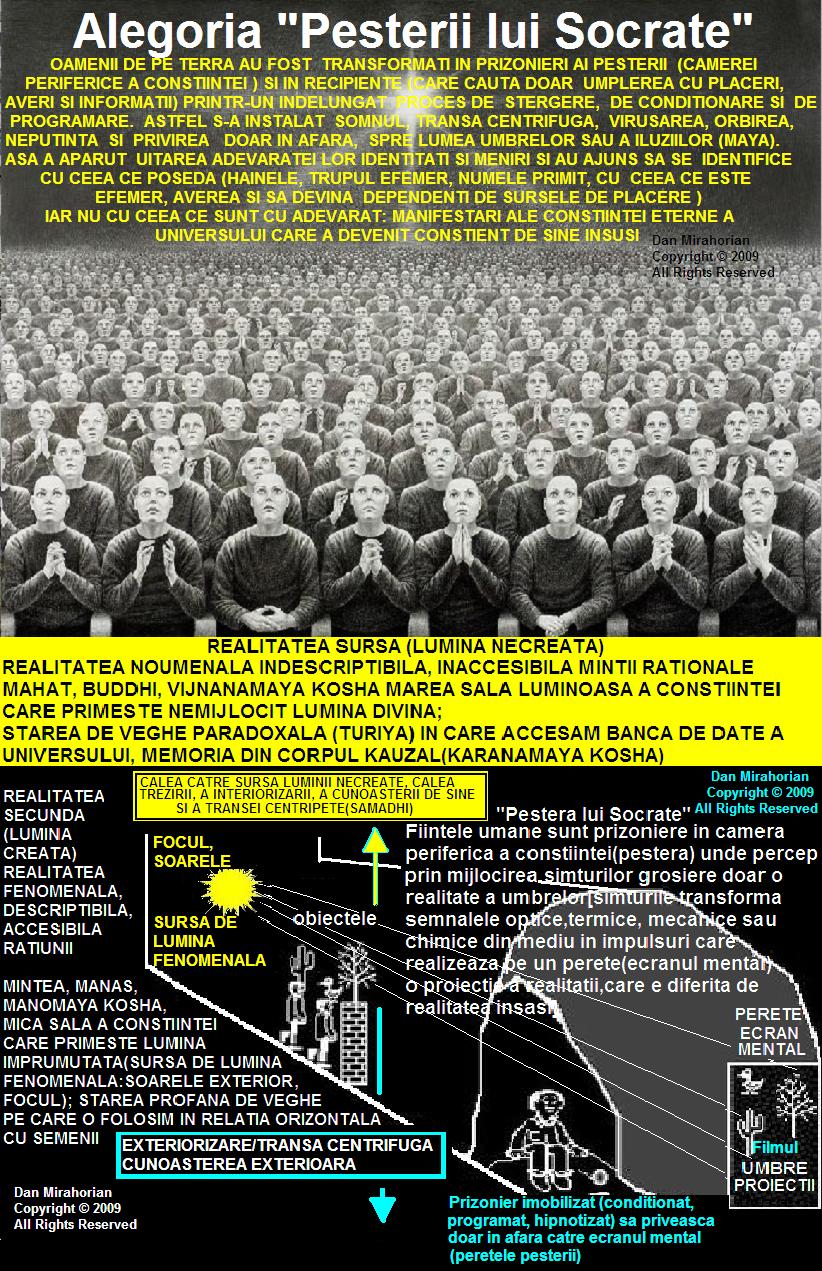
En maïeutique, il n'y a pas d'enfantement seulement de savoir ou de la connaissance intellectuelle, mais de la connaissance direct.
In maieutica(mosire) lui Socrate nu este vorba de a naste cunoastere intelectuala, cum eronat se considera azi, ci este vorba mai ales despre suspendarea identificarilor cu proiectiile mintii(vrittis; impulsuri,fluctuatii, umbre) in vederea eliberarii din pestera, a "nasterii din nou"("a doua nastere") si a accesului la cunoasterea nemijlocita a realitatii.
Mosirea(maieutica) lui Socrate vizeaza desteptarea, trezirea(buddhi), iluminarea si eliberarea din camera periferica a constiintei (pestera intunecoasa) in care fiintele umane au cazut in captivitate. In mica incapere aflata la subsol(in lb. engleza:"den") sau la periferia constiintei (pestera intunecoasa) fiintele umane nu vad realitatea scaldata in lumina eterna necreata, ci privesc la umbrele proiectate de o sursa de lumina fenomenala(focul, soarele) pe un perete(ecranul mental).
Atunci cand Iisus spunea ca fiintele umane "nu vad si nu aud, desi au ochi si urechi" facea referire la portile senzoriale care apartin corpurilor(sharira;kaya) sau invelisurilor subtile (kosha), adica vorbea despre ochii si urechile pe care orice fiinta trezita("fara inima impietrita"; "care-si aduce aminte cine este") le foloseste in timpul vietii intrupate.
Toate celelalte fiinte umane, "desi au ochi si urechi", acceseaza aceste porti doar inainte de intrupare(nastere) si dupa iesirea din corp(moarte).
Iisus se refera la Lumina Interioara/Inner Light "Iisus a raspuns: Nu sunt oare douasprezece ceasuri intr-o zi? Daca umbla cineva ziua, nu se impiedica, pentru ca el vede lumina acestei lumi; Iar daca umbla cineva noaptea se impiedica, pentru ca lumina nu este in el. (Ioan 11.9-10). Jesus answered, "Are there not twelve hours of daylight? A man who walks by day will not stumble, for he sees by this world's light. 10It is when he walks by night that he stumbles, for he has no light(inside)." (John 11:9-10).
"Iisus a înţeles situatia in care se afla omenirea de pe Terra cand a zis: "Pentru ce vă gandiţi că nu aveţi paini? Tot nu pricepeţi şi tot nu înţelegeţi? Aveţi inima împietrită? Aveţi ochi, şi nu vedeţi? Aveţi urechi, şi nu auziţi? Şi nu vă aduceţi aminte deloc?" (Marcu 8.17-18)
"And when Jesus knew it, he saith unto them, Why reason ye, because ye have no bread? perceive ye not yet, neither understand? have ye your heart yet hardened?
Having eyes, see ye not? and having ears, hear ye not? and do ye not remember?"(Mark 8:17-18)
Ca exista astfel de ochi si urechi o dovedesc si relatarile celor care au trait experienta din preajma mortii(NDE-Near Death Experience), cand aflandu-se in afara corpului(OBE- Out of Body Experience) au vazut si au auzit fara sa apeleze la simturile corpului fizic, un corp lasat undeva mai jos, pe o masa de operatii, un corp pe care medicii incercau sa-l readuca la viata prin manevre de resuscitare.
Despre acesti ochi este vorba si in atingerea desavarsirii in arte martiale. In cap 35 din Shogun, cartea ecranizata a lui James Clavell, este descris un moment magic, in care acesti ochi au fost folositi de Buntaro (Hosokawa Tadaoki), pt a trage cinci sageti, printr-un perete de hartie de orez, intr-o tinta (stalpul portii) situata la 30 de metri, care nu putea fi vazuta cu ochii fizici.
In chapter 35 ("A magical moment") of the novel Shōgun by James Clavell (1975) and in the movie we see how Buntaro(Hosokawa Tadaoki), pulls out his bow and shoots incredibly accurately right through the rice paper. Buntaro tells Anjin that he will demonstrate his technique. From where he is sitting, he shoots five arrows in a row that pierce through the paper thin walls. He then sends Anjin out to see the results. All five landed in the same place on the gate post.
Eugen Herrigel, in capitolul 8 intitulat "Tinta din intuneric"(The Target in Darkness) din cartea "Zen in arta trasului cu arcul"( Zen in the Art of Archery) relateaza cum maestrul sau(Awa Kenzõ) a tras cu arcul o sageata care s-a infipt in centrul unei tinte aflata in intuneric deplin la 30 de metri distanta. A doua sageata lansata in acelasi intuneric s-a infipt in cea trasa anterior
"The Allegory of the Cave" suggests that there are two different forms of vision: a "mind’s eye"(direct vision; described by the verb: "to see") and a "body's eyes(described by the verb: "to look")." The "body's eyes" is a metaphor for the sensory gates(indirect vision using the conversion in impulses).
While inside the cave, the prisoners function only with these body's eyes(Carlos Castaneda). The "mind’s eye" is the higher level of direct seeing, and is mobilized only when the prisoner realize the freedom from the bondages that keeps him centered into the outside world, identified with the cave wall (the mental screen) on which take place the illusory (maya) projection of shadows(vrittis;impulses).
This subtle eye exists within each human being even during the emprisonment in the body(cave). Near Death Experiences(NDE), OBE(Out of Body Experiences) and Enlightened masters(see the story of : Eugen Herrigel in his book "Zen in the Art of Archery" on his master Awa Kenzô), reveal that each human being can see without physical eyes in a state of alignment realized in a state of meditative(dhyana) or concentrative(dharana) absorption (trance);
In the eighth chapter (The Target in Darkness) of the book "Zen in Art of Archery"Eugen Herrigel, describes an incident in his training under master(Awa Kenzo)
"The Target in Darkness"
When, finally, Herrigel asked what he needed to do to hit the target. His master Awa Kenzô told him,
"Thinking about hitting the target is heresy. Do not aim at it."("only in the world of shadows the target is only outside; in the real world the target is also inside you, holographic"; Note written by Mirahorian)
Herrigel could not understand this answer. He insisted that “If I do not aim at the target, I cannot hit it.” At that point, Awa ordered Herrigel to come to the practice hall that evening.
Herrigel explained what happened that night, as follows:
"We entered the spacious practice hall adjacent to the master’s house.. hit it blindfolded, " I jerked out. The Master turned on me a glance which made me fear that I had insulted him and then said: " Come to see me this evening. " "I seated myself opposite him on a cushion. He handed me tea, but did not speak a word. So we sat for a long while. There was no sound but the singing of the kettle on the hot coals. At last the Master rose and made me a sign to follow him. The practice hall was brightly lit. The Master told me to put a taper, long and thin as a knitting needle in the sand in front of the target, but not to switch on the light in the target sand. It was so dark that I could not even see its outlines, and if the tiny flame of the taper had not been there, I might perhaps have guessed the position of the target, though I could not have made it out with any precision. The Master " danced " the ceremony. His first arrow shot out of dazzling brightness into deep night. I knew from the sound that it had hit the target. The second arrow was a hit, too. When I switched on the light in the target−stand, I discovered to my amazement that the first arrow was lodged full in the middle of the black, while the second arrow had splintered the butt of the first and ploughed through the shaft before embedding itself beside it. I did not dare to pull the arrows out separately, but carried them back together with the target. The Master surveyed them critically. " The first shot ", he then said, " was no great feat, you will think, because after all these years I am so familiar with my target−stand that I must know even in pitch darkness where the target is. That may be, and I won’t try to pretend otherwise. But the second arrow which hit the first˙ what do you make of that? I at any rate know that it is not ˆ I ˜ who must be given credit for this shot. "It shot and "It" made the hit. Let us bow to the goal as before the Buddha! "
Cum se realizeaza trecerea de la "a privi" la "a vedea"
How to realize the shift from "to look" at " to see"
Trecerea de la "a privi" pe ferestrele simturilor(ochii fizici) la a vedea face obiectul Aforismelor lui Patanjali sau Yoga Sutra.
Iisus spune ca :" doar cei ce-si vor da viata pt Mine o vor castiga"
Lao Tzu(Laozi):"Doar cel ce se stinge fara sa moara va trai vesnic"
Folosirea portilor sau a simturilor apartinand corpurilor sau invelisurilor subtile se poate realiza in cursul coborarii constiente in starea de absorbtie concentrativa(transa;samadhi)[somnul (hypnos) este o mica moarte in ciclul diurn care reproduce toate fazele vietii]
Coborarea constienta in starea de absorbtie concentrativa(transa;samadhi) conduce la alinierea corpurilor, la eliminarea identificarilor cu fluctuatiile proiectate pe ecranul mental, la stingerea sau calmarea agitatiei ori fluctuatiilor si la relaxarea ori diminuarea legaturilor care ne tin atentia indreptata doar catre lumea din afara.
O atentie prizoniera(ancorata in exterior) sau imobilizata(prin conditionare,programare) sa se uite doar la peretele(ecranul mental) din pestera(trup), pe care este proiectat filmul(de impulsuri vrittis) iluzoriu al umbrelor(maya) este sursa unei pilotari parazite care impiedica alinierea.
De aceea Iisus spunea ca "unde iti este comoara acolo iti este si inima"
Ancorarea in lumea periferica impiedica alinierea si intrarea in functionarea holografica sau nondualista(de suspendare a dualitatii, distantei subiect-obiect).
Socrate utiliza intrebarile din mosire sau din maieutica nu pt. a ajunge la raspunsuri intelectuale, ci pt. a suspenda mintea si pt. a descoperi raspunsul din profunzimea noastra, exact calea de trezire din metoda Koan si din Jnana-Yoga.
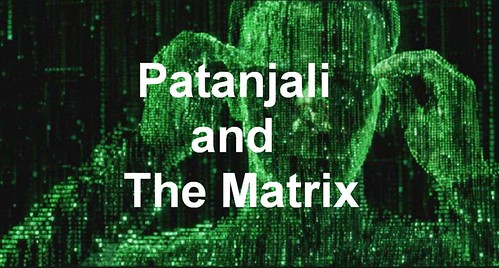
The Bible reports that the serpent(a symbol for "vibration" ,"shadow" or "vrittis" in Sanskrit language) was present in the Garden of Eden. He was there then even as he is here now, using half-truths to deceive even the first humans

"To the mind that is still the whole universe surrenders"
"Catre mintea neclintita intregul univers se preda"
(Lao Tzu , Buddha, Chuang Tzu)"
Many of the movies that have hit the big screen over the last few years question reality—or the real world, as we know it—pointing out that we have fallen prisoners or captives in an artificially created dream world produced by programming and conditioning in which we identify ourseves with the body and the external world. Movies and TV series like The Matrix, The Matrix Reloaded, The Thirteenth Floor, Harsh Realm, Vanilla Sky, Total Recall, The Truman Show, Strange Days, Dark City, Open Your Eyes, The Frequency, Existenz, and The One all examine the theme of just how seriously wrong we might be when we consider reality only a reflection of it on the mind screen. In "The Matrix", for instance, the following dialogue takes place: "What is real? How do you define "real"? If you're talking about your senses—what you feel, taste, smell, or see—then all you're talking about are electrical signals interpreted by your brain". These movies' themes had been the focus of philosophical research in the past, though not until the end of the 20th century did they receive the attention they deserved. But now, science has proven the subject Patanjali discusses to be scientific fact, rather than a philosophical hypothesis.
See more in blog:http://blog.myspace.com/index.cfm?fuseaction=blog.view&friendID=284520380&blogID=337121770
Acum si aici, este dezvaluită secvenţial modalitatea de a iesi din lumea umbrelor expusa de Patanjali in Yoga Sutra
Yoga[starea unificata;Stiinta si tehnologia Transei pt. realizarea alinierii, conjunctiei ]

Patanjali Yoga Sutra translated by Mirahorian
Yoga Sutra 1.1
Traducerea convergenta/ConvergentTranslation:
R: OM(AUM)/Acum si aici, Yoga[starea unificata;Stiinta si tehnologia Transei pt.Aliniere] este dezvaluită secvenţial [sub forma de sutra] Nota 1
E: OM(AUM).Here and now,Yoga [the centered state;Science and technology of Union] is exposed step-by step [in the form of sutra(instructions;condensed rules;aphorisms)]/
F:OM. Maintenant,le Yoga(etat unifiee;la science de l'Union) est expose [sous la forme de regles condense(sutra)]/
S:OM,Ahora la enseñanza para (provocar) el estado unificado (yoga);
Yoga Sutra 1.2 Stingerea vrittis(umbrelor, proiectiilor de pe ecranul mental);Yoga(starea unificata) [se realizeaza prin] nirodha [ golire,vidare,stingere constienta (a procesului de identificare cu)] vrittis (realitatea secunda proiectata pe peretele mental prin impulsuri)

Yoga Sutra 1.2 Stingerea vrittis(umbrelor, proiectiilor de pe ecranul mental)
Patanjali Yoga Sutra translated by Mirahorian
Traducerea convergenta/ConvergentTranslation:
R: Yoga(starea unificata) [se realizeaza prin] nirodha [ golire,vidare,stingere constienta (a procesului de identificare cu)] vrittis (vartejurile;impulsurile; fluctuatiile;valurile;oscilatiile,gandurile;emotiile; proiectiile se pe ecranul mental, umbrele) din chitta (minte); Nota 1 E:Yoga [is realised by ]the cessation [nirodha:stilling (in the sense of continual and vigilant watchfulness)]of the indentification with the fluctuations (vritti:activities,modifications,impulses, the thought forms,workings) of the mind (chitta) / F:Le Yoga [l'etat unifie est realise par ] la nirodha (l'arret; interruption, extinction,restriction, suspension) [de l'identification avec les] vritti(agitation, modifications, perturbations, fluctuations,impulsions, mouvements,l'activite automatique) de (ou dans) chitta (mental;esprit, pensee;conscience peripherique) / S: El estado unificado del "Yoga" [surge cuando] cesa (nirodha) la vritti (agitación,pensamientos, emociones y sensaciones fluctuantes) de la chitta (Mente);
Yoga Sutra 1.3 Efectul stingerii vrittis(umbrelor, proiectiilor de pe ecranul mental): conjunctia, alinierea, asezarea in scaunul de domnie, reamintirea adevaratei noastre identitati

Yoga Sutra 1.3 Efectul stingerii vrittis: conjunctia, alinierea
Patanjali Yoga Sutra translated by Mirahorian
Traducerea convergenta/ConvergentTranslation:
R: Atunci Vazatorul(adevaratul Sine) se aseaza in propria sa natura sau formă (svarupa) Nota
E: Then the Seer(i.e. the transcendental Self) rests or abides in svarupa (its essential form;in its true nature;when this has been accomplished, the man knows himself as he is in reality)/ F: Alors,dans ce cas, le voyant ou l'observateur s'établit et demeure en lui meme,dans sa forme propre/ S: Entonces (en el estado unificado),el espectador ("Quien Ve") queda establecido en su Naturaleza Original ;
Yoga Sutra 1.4 Starea actuala in care se afla omul [identificat cu umbrele care sunt luate drept entitati(fiinte, obiecte, procese); identificat cu periferia care-l piloteaza, desincronizat, lipsit de aliniere)];

Yoga Sutra 1.4 Starea actuala in care se afla omul(identificat cu periferia care-l piloteaza, desincronizat, lipsit de aliniere)
Patanjali Yoga Sutra translated by Mirahorian
Traducerea convergenta/ConvergentTranslation:
R: In celelalte cazuri(al starilor neasezate in svarupa:Centru,Temelia imuabila) se manifesta sarupyam(identificarea Vazatorului cu) vrittis(lit.:vartejurile;impulsurile;fluctuatiile;impulsurile,valurile; gandurile;emotiile)[prezente pe ecranul mental] Nota 4
E: Otherwise, the Witness identifies himself with vrittis (fluctuations,thoughts; modes; activities;forms and with their active modifications) manifested on the mental screen(chitta)]/
F: Sinon,il existe une identification entre le voyant et ces vrittis [fluctuations,impulsions, mouvements, pensee ou emotions qui existe dans le mental (chitta); l'observateur parait assumer la forme de la modification mentale]/
S: En los otros estados(fuera del estado unificado;el alma-mente),se identifica con Vrittis (las fluctuaciones mentales,los procesos mentales; asume la misma forma de las funciones mentales); Nota :
Identificarea cu vrittis(fluctuatiile;valurile; gandurile; emotiile) prezente pe ecranul mental este consemnata in zicale si proverbe populare ca un proces de colorare: limbajul popular este elocvent: in stare emotionala violenta-de furie sau de indignare "vede rosu" sau"cel furios vede totul rosu "; in stare de tristete, suparare, deprimare ori de descurajare " totul e negru.. sumbru ","are idei negre"; optimistul"vede in roz".;"anger coloured her judgment"
Yoga Sutra 1.5 Cele cinci tipuri de fluctuatii mentale si cele doua modalitati de impact afectiv cu acestea

Yoga Sutra 1.5 Cele cinci tipuri de fluctuatii mentale si cele doua modalitati de impact afectiv cu acestea
Patanjali Yoga Sutra translated by Mirahorian
Cele cinci tipuri de fluctuatii mentale si cele doua stari in care se manifesta interactia (impactul afectiv) cu aceste fluctuatii mentale: polarizata si neutra/The five kind of mental fluctuations and the two manifested states of the affective interaction with these mental fluctuations : polarized and neutral
Traducerea convergenta/ConvergentTranslation:
R: [Constientizati] cele cinci feluri de vrittis (fluctuatii mentale, impulsuri) si cele doua stari in care se afla acestea (in functie de impactul emotional):klishta (colorate; perturbatoare, dureroase-placute, produc atractie-respingere; manifestare polarizare) sau aklishta (incolore;neutre;neperturbatoare;nemanifestate; in stare latenta sau potentiala; nedureroase -orice placere e o durere in stare potentiala ;vedeti: YS 2.15)/ E:(Witnessing)the five kinds of vrittis (thoughts;modes; patterns;activities;forms and with their active modifications of the mind) that are either colored or not-colored; F: Les fluctuations sont de cinq sortes, ayant les caractéristiques d'affliction ou de non-affliction/ S: Las principales fluctuaciones mentales (Vrittis) son cinco; las cuales se pueden dividir en manchadas e inmaculadas.
Yoga Sutra 1.6 Care sunt cele cinci categorii de vrittis (impulsuri mentale)?

Yoga Sutra 1.6 Care sunt cele cinci categorii de vrittis (impulsuri mentale)?
Patanjali Yoga Sutra translated by Mirahorian
Traducerea convergenta/ConvergentTranslation:
R: Cele cinci categorii de vrittis (impulsuri mentale) sunt:Pramana(cunoasterea corecta mijlocita), Viparyaya (cunoasterea gresita; iluzia),Vikalpa(imaginatia, conceptualizarea;visul;halucinatia; gandirea verbala-dialogul interior),Nidra (starea de somn profund fara visuri; lipsa constientei;somnolenta;inertia) si Smriti (memoria)/ E:The five vrittis (mental activities) are Pramana (right knowledge,real cognition), Viparyaya (wrong knowledge,unreal cognition, error, misconception, illusion), Vikalpa (imagination,conceptualization,fancy,fantasy,hallucination),Nidra (dreamless deep sleep;passivity;unconsciousness) and Smriti (memory;recollection; remembering); Les fluctuations sont : Pramana (la cognition valable), Viparyaya(l'opinion erronée),Vikalpa (la conceptualisation), Nidra(le sommeil sans reves) et la Smriti (la mémoire,le souvenir) /Estas cinco principales fluctuaciones mentales (Vrittis) son:Pramana (conocimiento correcto, el conocimiento cierto y probado;medios de recto conocimiento),Viparyaya (falsas concepciones;conocimiento errado,el conocimiento erróneo),Vikalpa (imaginación,construcciones mentales),Nidra (el sueño profundo sin ensueños) y Smriti (memoria,la retentiva)
Yoga Sutra 1.7 Pramana(cunoasterea corecta mijlocita)

Yoga Sutra 1.7 Pramana(cunoasterea corecta mijlocita) Pramana (mediated correct knowledge)
Patanjali Yoga Sutra translated by Mirahorian
Traducerea convergenta/ConvergentTranslation:
R: Pramana(cunoasterea corecta mijlocita) se refera la imaginea generata pe ecranul mental de catre vrittis (impulsurile) provenite din urmatoarele izvoare:1.Pratyaka (perceptia senzoriala;observatia), 2.Anumana [procesare analitica(rationala,logica; cauzala, inductiva si deductiva) si analogica], 3.Agamah[impulsurile transmise de marturiile emise implicit("imprinting", procesul de programare sau de conditionare conceptuala; conexiunea la "subconstientul colectiv"; multimea de credinte, identificari, ierarhizari valorice , estetice,"bunul simt"si traditii transmise implicit pe canale subconstiente) si marturiile emise explicit (verbal sau in scris) de autoritati credibile laice (parinti, scoala) sau religioase(traditii; textele revelate)]; E:Pramana (mediated correct knowledge) [can be derived from] Pratyaka (perception,observation), Anumana (inference) and Agamah (testimony;words of others); F: Une cognition valable (Pramana) est basée sur:1.Pratyaka (la perception),2.Anumana (l'inférence) et 3.Agamah (le témoignage;la communication verbale); S: El conocimiento correcto (Pramana) proviene de las siguientes fuentes: Pratyaka la percepción directa, Anumana (deducción ,la inferencia lógica) y Agamah (testimonio,la referencia a autoridades dignas de confianza,revelación);
vedeti restul instructiunilor de aliniere pe :http://www.flickr.com/photos/pata_n_jali
THE MOST IMPORTANT BOOK ON EARTH-PATANJALI’S YOGA APHORISMS
http://www.myspace.com/patanjaliyoga
Perception - The Secret beyond Matter
Socrate pratiquait une forme de Jnana-Yoga quand la maïeutique amene ces élèves au dela du mental par des questions qui peuvent trouver leur réponse en dehors de la pensee . Le Jnana Yoga aussi n'est pas une vois vers la connaissance intellectuelle mais un cheminement afin d' appréhender la Réalité, vers la Connaissance de l'Ultime La maïeutique de Socrate est l'art d'accoucher et non d'enfanter .En maïeutique, il s'agit d'enfanter des âmes et non des corps Socrates: "Chez-moi, il n'y a point d'enfantement de savoir ; c'est de leur propre fonds que les disciples tirent leurs découvertes. Les découvertes viennent du propre fonds de chacun. Je suis le fils d'une sage-femme et je pratique le même métier qu'elle Par leurs incantations et leurs médicaments, les sages-femmes donnent l'éveil aux douleurs de l'enfantement si elles discernent une véritable grossesse" . La maïeutique est l'art d'accoucher les esprits. Il s'agit d'une « méthode » qui repose sur l'interrogation et qui se propose d'amener l'interlocuteur à accoucher de ses idées, de ses opinions, de ses a priori. Plaçant l'interlocuteur dans une position inconfortable, face à ses idées enfantés qui sont contradictoires et semblent s'annuler, se réfuter, cette « méthode » ne propose aucune solution : elle est toute entière interrogation, c'est-à-dire ironie. Elle détruit sans re-construire.
The answer kills the question /Raspunsul ucide golul creat de intrebare /La réponse tuerait la question
La dialectique Socratique est une dialectique négative, autrement dit, elle procède en ne résolvant pas. Cette attitude vise à dépouiller, à mettre son interlocuteur à nu, à souligner le Tu, comme le relève Buber. A propos de la dialectique socratique, on peut reprendre ce que Kojève disait au sujet de la dialectique hégélienne, à savoir qu'il ne s'agit pas d'une méthode : il ne s'agit pas d'une convention ou d'une invention au même titre que la logique aristotélicienne. C'est une réalité ; elle est existentielle. Autrement dit, chez Socrate je suis moi-même une question, je suis insoluble, je ne suis pas l'objet d'un savoir et je m'échappe. Rencontrer Socrate, c'est rencontrer pour ainsi dire le point d'interrogation, l'énigme. En tous les cas, c'est rencontrer un homme singulier qui me renvoie à moi-même, il dit « Tu ? » à l'instar du Christ qui dira « tu le dis » à ses interlocuteurs. C'est à la lumière de ces phénomènes qu'il faut comprendre la célèbre apostrophe qui dit « connais-toi toi-même ». Difficile alors de parler de sa rencontre avec Socrate autrement qu'en disant son rapport (personnel, à soi) à l'interrogation – et c'est là qu'on observe la pluralité des tableaux qui nous sont dépeints de lui. En vérité je vous le déclare, ce n'est pas Socrate que les philosophes représentent mais leur propre rapport à l'interrogation. Heurté aux interrogations de Socrate, ils ont déjà fait retour sur eux-même.
La sage-femme et la maïeutique
1. La sage-femme n'enfante pas elle-même : elle pratique l'art d'accoucher d'autres femmes ; 2. En maïeutique, Socrate n'enfante pas ; il joue le rôle d'accoucheur; 3. La sage-femme n'éveille les douleurs de l'accouchement que s'il y a une vraie grossesse; 4. Grâce à son expérience, elle peut favoriser des unions entre certaines femmes et certains hommes pour qu'il y ait une belle progéniture ; elle peut ainsi se faire entremetteuse; 5. En maïeutique, l'enfantement concerne les âmes et non les corps 6. Dans ce cas, il n'y a pas d'enfantement d'un savoir, mais des découvertes, qui viennent du propre fonds du disciple
Maieutics is a word is derived from the Greek "μαιευτικός," pertaining to midwifery. Maieutics is a complex procedure of research introduced by Socrates, embracing the Socratic method or elenchus(Socratic Debate) in its widest sense. It is based on the idea that the truth is latent in each human being and the mind answers are to be stopped by questioning in order to free ourselves from the dark cavern. Each human being due to his innate reason can be "given birth" , "born again", by answering questions that block the mind Socrates (Greek: Σωκράτης, Sōkrátēs; c. 469 BC–399 BC) was a Classical Greek philosopher. Credited as one of the founders of Western philosophy, in reality he is an enigmatic figure known only through other people's accounts. It is Plato's dialogues that have largely created today's impression of him. The Socratic method, or elenchus remains a commonly used tool in a wide range of discussions, and is a type of pedagogy in which a series of questions are asked not only to draw individual answers, but to encourage fundamental insight into the issue at hand. It is Plato's Socrates that also made important and lasting contributions to the fields of epistemology and logic, and the influence of his ideas and approach remains strong in providing a foundation for much western philosophy that followed. http://en.wikipedia.org/wiki/Socrates
Relaxarea si miscarea spre centrul ciclonului
Abandonarea miscarii orizontale si trecerea la cea verticala se realizeaza in centrul ciclonului

Koan or Kōan is a Japanese rendering of the Chinese term, transliterated as kung-an (Wade-Giles), gōng-àn(Pinyin)[gong'an(Korean), công án: (Vietnamese)] A Koan question containins aspects that are inaccessible to rational understanding, yet may be accessible to intuition. Koan method is used in Chan (Zen) Buddhism to stop the habit of discursive thought or shock the mind into awareness in order to trigger the experience of insight (kensho), Awakening or Enlightenment. A famous kōan is: "Two hands clap and there is a sound; what is the sound of one hand?" (attributed to Hakuin Ekaku, 1686-1769, considered a reviver of the kōan tradition in Japan). from:http://en.wikipedia.org/wiki/Koan
Le kōan (japonais),[kung-an(Wade-Giles)ou gōng'àn(Pinyin) en chinois], est une courte question absurde ou paradoxale utilisée dans certaines écoles du bouddhisme chan ou zen comme un objet de méditation ou pour déclencher l'arrêt du mental, le vide du mental et l'éveil. Aujourd'hui encore, le kōan est utilisé dans l'enseignement oral de la tradition Soto pour suggérer « ce qui ne peut être dit avec des mots ». Le kōan prend la forme d'une aporie(question qui place le lecteur ou l'auditeur dans l'embarras pour trancher entre deux affirmations) qui ne peut être résolue de manière intellectuelle. Le méditant devra délaisser son appréhension habituelle des phénomènes pour laisser la vérité le pénétrer. Le kōan, dans sa forme pure, n'est pas une devinette, ni un mot d'esprit étant transmis par le maître au disciple. Il ne s'agit pas de répéter quelque obscurité, de triturer une énigme, mais de travailler avec un paradoxe de sagesse centenaire, transmis personnellement, dans l'intimité entre maître et étudiant. L'étudiant prend à cœur de résoudre le kōan, et la pratique durant des séances formelles, mais plus largement durant chacune de ses activités quotidiennes, jusqu'à atteindre le satori(japonais satori ; chinois: wù) est un terme du bouddhisme zen qui désigne l'éveil spirituel).La signification littérale du mot est « compréhension ». Il est parfois utilisé à la place de kenshō, toutefois kenshō désigne la première perception de la nature de Bouddha ou vraie nature – une expérience qui ne dure pas. Le satori par contre désigne une expérience qui se prolonge, à l'instar d'un bébé qui apprend à marcher – après beaucoup d'efforts il se tient debout, trouve son équilibre et fait quelques pas puis tombe (kenshō). Après un effort prolongé l'enfant se rendra compte un jour qu'il peut marcher tout le temps.
Jnana-Savoir Intellectuel ou Connaissance de l'Ultime
"Jnana" signifie sagesse, discernement, Connaissance, ou "un cheminement afin d'appréhender la Réalité"(Sankara). Les Upanishads nous disent "Connaître Brahman, c'est être Brahman". Svami Sivananda disait du Jnana yoga: "Le Jnana Yoga n'est pas que connaissance intellectuelle". Ce n'est ni entendre, ni reconnaître. Ce n'est pas seulement un consentement intellectuel. C'est la réalisation directe de son unicité en Unité avec l'Être Suprême. C'est Paravidya (la Sagesse Suprême). La conviction intellectuelle ne conduira pas à Brahma-Jnâna". Le terme Connaissance demande des explications. Il est d'abord nécessaire de le distinguer du savoir, de la réflexion intellectuelle,le mot par lui-même nous dit:"Co-naître" donc naître avec soi, naître à soi-même. Nous voyons donc que nous retrouvons le sens de toute démarche spirituelle: la ré-unification de soi qui nous amènera à l'Unité. Les écritures en relation avec le Jnana-Yoga sont essentiellement: le Yoga Vasistha (9 iéme siècle)- les Upanishad( 770 a.v.JC) et les Védas (mot sanscrit qui se traduit souvent aussi par connaissance -1800 a.v.JC). Le Jnanin veut connaître Brahman: l'esprit universel et l'Atman: l'âme individuelle et réaliser leur lien. Ainsi que les Upanishad le lui indiquent: "Tat tvam asi":"tu es Cela".

Le Jnani veut ainsi mettre fin à l'ignorance qui lui empêche de comprendre la nature non-dualiste de l'univers. Bien sur nous pourrions considérer cette nature double matière - esprit comme le monisme prôné par Hegel et Berkeley. Mais le Jnani ne pense pas atteindre l'éveil spirituel seulement en étudiant les textes anciens, il s'étudie lui-même. Nous pourrions dire que la connaissance des aspects de la nature humaine relève de la psychologie ou de la psychanalyse, d'une certaine façon, mais le but en est totalement différent,il n'est pas thérapeutique. Nous pourrions parler de connaissance transcendante ou même d'une philosophie trans-personnelle. Mais cela ne serait pas suffisant le Jnani veut vivre en Dieu et pas seulement étudier Dieu, il n'est pas un métaphysicien. Le Yoga Vasistha et le Brahma Sutra dans les Upanishad sont essentiellement consacrés à définir la réalité de la Conscience mais les textes sont très mystiques et souvent hermétiques, ce qui nécessite les commentaires et explications d'un guide expérimenté. Le Jnana Yoga se retrouve aussi dans l'advaita Yoga ou Yoga non dualiste, dansle Mahayana et le Zen ou prajna (la sagesse) remplace jnana. Le Jnana-Yogin, de même que le bouddhiste, pensent que la cause de nos douleurs réside dans l'ignorance. Ignorance de ce qu'il est réellement: un être de nature divine. Cette ignorance le fait vivre dans l'illusion(Maya ), car identifié à son corps, ses émotions, ses pensées. Le jnani cherche donc des moyens de découvrir sa nature totale sans s'identifier à une partie de lui-même seulement. L'état de Jnanin est en fait un état de conscience éveillée (de Bodhicitta ), de perception et de compréhension globale. Pour cela il développe le discernement(viveka ). Ce discernement ne peut cependant pas être présent sans développer la vigilance. Seul la conscience témoin peut nous permettre de ne pas nous identifier sans cesse aux pensées,aux émotions,aux situations de vie, aux souffrances même pour se prouver à soi-même son existence. Paradoxe puisque nos identifications inconscientes et constantes essaient de nous démontrer que nous existons bien alors que ces mêmes identifications sont illusion de notre nature véritable. Bien évidemment le Jnani ne portera aucun jugement sur ses propres identifications. Le développement de notre attention vigilante et de notre conscience témoin nécessite des moyens, des outils que le jnani découvre dans sa pratique de méditation. Le Jnani anhile donc la distinction entre le sujet et l'objet, il devient unifié avec chaque aspect de la vie. Mais qui prendra conscience du témoin lui-même ? Personne. Le Yogi comprendra alors que l'ego n'existe pas par lui-même, que l'ego n'est qu'une manifestation de Brahman et que tout est Brahman sans séparation. En fait c'est seulement cette notion de séparation qui aura disparue. Cette séparativité qui nous isole des autres, de nous et de la Réalité nous l'avons créée pour nous protéger au départ, nous devons ensuite apprendre à nous en défaire.
Le But du Jnana-Yoga est d'être Réel
Dans la tradition, le Jnana Yoga utilise quatre moyens de salut(enseignés notamment par Sankarâchârya):1. Viveka: la discrimination; 2. Vairagya: le non-attachement, être libre de ce qui n'est pas lui-même; 3.Shad-sampat: les vertus de: tranquillité/ de maîtrise du mental/ de simplicité/de patience/de foi/ de concentration; 4.Mumukshutva: aspiration à la libération. Pour échapper à l'illusion du monde et devenir ce que l'on est deux voies classiques sont présentent:
La voie de la négation: le fameux: "Neti, Neti"
Je ne suis pas ce corps...Je ne suis pas les émotions, je ne suis pas la pensée,...mais plus que cela et tout cela. Cette voie mal comprise peut engendrer un rejet de la personnalité. Ce qui ramènerait le jnani a un monde de lutte entre la matière et l'esprit, un monde dualiste. Le mot 'Nirvana' signifie 'extinction', mais instinction de quoi ? De l'illusion, c'est à dire la fin non du monde de la matière,mais de la séparation entre la matière et l'esprit: la non séparativité.
La voie de L'affirmation
Le Jnani affirme que 'Tout est Brahman'. Le Jnana-Yoga nous explique comment l'Atman est au-delà de ce qui caractérise la multiplicité. Le temps, l'espace, les causes sont créations mentales, donc irréelles, illusoires. Dès lors, il nous appartient de contempler l'immortel Atman. La réflexion et la discrimination font intervenir la logique et la raison, mais cette dimension intellectuelle ne suffit pas pour réaliser l'Atman et Brahman. La méditation, la perception directe et intérieure, le discernement font eux partie de notre cerveau de droit, notre cerveau créatif. Nous pourrions même dire que notre cerveau logique (celui de gauche) est celui qui s'identifie par insécurité, tandis que notre cerveau de droite lui nous permet de vivre notre vastitude, notre infinité.
La question essentielle du Jnani est toujours: 'Qui suis-je ?'
Question comme un koan Zen qui me permet d'approfondir à chaque instant ma qualité de présence et d'intelligence. Car être intelligent est le but du Jnana Yoga: Intelligent signifiant: 'inte-lligere':'faire des liens". Nisargadatta, dont l'ouvrage essentiel est 'Je Suis' a réalisé ce cheminement et il écrit:
" Qui peut être conscient d'être conscient si ce n'est la conscience elle-même ?
Existe-t-il une autre entité ? La conscience est là, elle est toujours consciente d'elle-même, le seul ennui est que cette conscience se soit identifiée au corps! "
Ramana Maharishi, considéré comme un des plus grand Jnani enseigne une pratique de conscience incluant respiration et attention, intégrant les voies de négation et d'affirmation :
Ko Ham - Qui suis je ? - En Inspirant
So Ham - Je suis Cela - Rétention
Na Aham: Je ne suis pas cela-En expirant
Svami Prajnanpad pose la question: "Quelle est la vraie racine de l'illusion(maya) ? et il répond: Le désir(ancorarea in lumea din afara). Le non désir ne devant cependant pas être vécu comme une anhilation de soi, mais comme un état sans demande, c'est à dire la liberté. Un état sans demande,c'est un état guidé par le Soi au lieu d'être guidé par la seule personnalité. Ce que l'on appelle le non-agissant. Le but ultime du Jnani est de vivre le Samadhi, d'être unifié au Tout, d'être guidé par l'Esprit tout en étant dans le monde. Le Yoga de la Connaissance nous mène à la libération parce que l'on devient libre de ce que l'on connaît. C'est toujours l'inconnu qui nous limite, nous apeure et nous insécurise. En étudiant et en intégrant l'Atman et le Brahman, mon âme retrouve ses liens universelles: "Tat Tvam Asi"
Byron Katie - Sans notion d'identité ou Aimer ce qui est
Fondatrice d'un "Travail",semblable par son questionnement autant aux koans zen qu'à la maïeutique socratique, Byron Katie ne s'inspire au préalable d'aucune tradition, ni orientale ni occidentale. En préalable à l'Eveil, elle traversa une douloureuse période de dépression et de paranoïa. Le Travail vit le jour un matin de février en 1986, alors que Byron Kathleen Reid, une femme de quarante-trois ans originaire d'une petite ville dans le désert de la Californie du Sud, se réveilla sur le plancher d'un centre de réadaptation. Au beau milieu d'une existence banale – deux mariages, trois enfants, carrière réussie –, Katie avait effectué une descente infernale de dix ans dans un état de rage, de paranoïa et de désespoir. Pendant deux ans, son état dépressif s'était avéré si grave qu'elle avait à peine quitté la maison. Elle restait au lit durant des semaines, menant ses affaires depuis le téléphone de sa chambre à coucher, incapable même de se brosser les dents ou de se laver. Ses enfants passaient devant la porte de sa chambre sur la pointe des pieds, de crainte de déchaîner sa fureur. Pour finir, elle élit résidence dans un centre de réadaptation pour femmes souffrant de troubles de l'alimentation, le seul type de traitement remboursé par son assurance. Les autres résidents la craignaient tellement qu'on l'installa dans une pièce au grenier, seule.
Environ une semaine plus tard, un matin, alors qu'elle gisait sur le sol, ne s'étant pas sentie digne de dormir dans le lit, Katie s'éveilla dépourvue de toute notion de son identité ou de ce qu'elle était. « Il n'y avait plus "moi" », explique-t-elle. « Toute la rage, toutes les idées qui m'avaient tant perturbée, mon univers, le monde entier, avaient disparu. Simultanément, un grand rire s'éleva du tréfonds de mon Etre et déferla au dehors. Tout était méconnaissable. Comme si autre chose s'était éveillé. Cette chose a ouvert les yeux, regardant par les yeux de Katie. Elle était ravie ! Ivre de joie. Rien n'était séparé ; rien n'était inadmissible à cette chose ; tout n'était que son propre soi. » Byron Katie, Écrit avec Stephen Mitchell, Aimer ce qui est. Vers la fin de la souffrance, Ariane, 2003.
GUIDED AWAKENING/TREZIRE PILOTATA
Mirahorian: Relaxarea Pilotata, o cale antica pentru trezire, reamintirea adevaratei noastre identitati, vindecare, slabire, scadere in greutate, cresterea performantelor (artistice, mentale, sportive), invatare rapida si acces la Banca de Date a Universului
Mirahorian: Guided Relaxation an ancient way for awakening, recalling or remembering our true identity, healing, weight loss, increase in artistic, mental and athletic or sports performances, superlearning and access to the Data Bank of the Universe
contact:danmirahorian@gmail.com
See more on: http://www.myspace.com/guided_awakening
http://guidedawakening.spaces.live.com
http://guidedawakening.multiply.com
http://uk.360.yahoo.com/GUIDEDAWAKENING
http://guidedawakening.blogspot.com
http://ro.netlog.com/cunoastereascunsa
http://guidedawakening.weblog.ro
http://www.flickr.com/photos/guidedawakening
An Adaptation of Plato’s Allegory in Clay
http://www.youtube.com/watch?v=E4XXItJYFKA&eurl=http://platosallegory.com/&feature=player_embedded
THE MOST IMPORTANT BOOK ON EARTH-PATANJALI’S YOGA APHORISM:
http://www.myspace.com/patanjaliyoga
Alan Watts -Who Am I?
